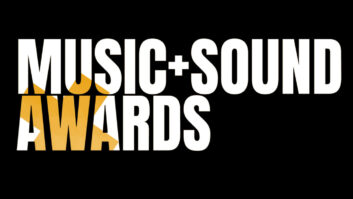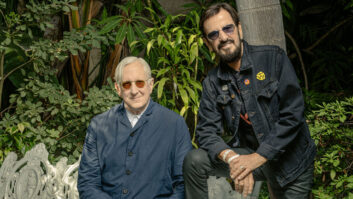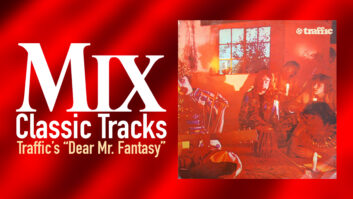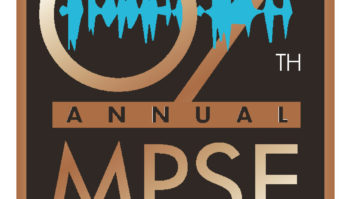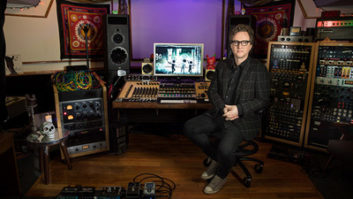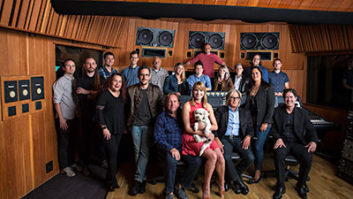
Former Beatle Ringo Starr calls it, simply, The Cupboard. It’s a shrine to The Beatles in more ways than one: a tiny wooden office over a Thai restaurant in West Los Angeles, up whose rickety wooden back stairs have climbed some of the biggest names in modern music to drop in, laugh and make dynamite records. The room is former Hudson Brothers Mark Hudson’s Whatinthewhathe? Studio. The walls are covered with pictures of the Fabs themselves (and others), some autographed, some posed with the proprietor. “When Ringo first came here, I actually had to take some of them down,” Hudson confesses. “I was afraid he’d think I was a stalker!”
Hudson has been Starr’s producer (as well as, occasionally, for Aerosmith, Hanson and others) since the recording of the 1998 Vertical Man. He’s done four albums, including the recent, very well-received Koch release, Ringo Rama. They’ve been friends even longer, dating back to the early ’70s, when fellow Beatle John Lennon was in L.A. for his “Lost Weekend” period. Pals with both Starr and legendary songsmith/singer Harry Nilsson, Hudson was even in attendance that fateful night at The Troubador when Lennon heckled the Smothers Brothers and was asked to leave after donning a sanitary napkin on his head and annoying a waitress. “It was a pretty raucous time,” he recalls.
It all started after Mark Salerno and his brothers, Bill and Brett, saw The Beatles play in concert in 1965 in their hometown of Portland, Ore. “It was probably my first and only homosexual experience,” jokes Hudson. “It was my lust for loving what they were doing and wanting to be a part of that. I just saw them having so much fun.” Mark soon joined brother Bill’s garage band, The MySirs (“I don’t even know what that meant.”), playing drums.
Not long after changing their names to Hudson (“Salerno sounded like we should be shot out of a cannon.”), the three boys got a manager, a “Mr. Bailey,” who produced their first record in 1966. “It was in the days when the engineers wore white smocks, and ‘recording on multitrack’ meant 3-track,” says Hudson. The following year, at age 16, Mark and his brothers landed a deal with Scepter Records, changed their name to the New Yorkers and moved, suitably, to New York City. The group got on one of those amazing ’60s package tours with their regional Scepter hit, “Mr. Kirby,” playing on an impressive roster that included The Who, Deep Purple and Spencer Davis, all behind headliner Herman’s Hermits.
Eventually, the group moved to L.A., making records with producer Dick Monda and singing backup for other artists, such as Kenny Rogers, who paid them each $8 for their services. “There was a camaraderie back then in recording,” recalls Hudson. “You’d be walking down the halls of A&M and you’d see Joni Mitchell flirting with Graham Nash, and then suddenly someone would say, ‘Hey, we’re doing handclaps in here,’ and everyone would get up and just walk in and handclap on your record. Now, you gotta go through their lawyer to make sure they can get a release and someone has to rub their neck.”

In 1972, Elton John took notice and signed the newly renamed Hudson Brothers to his Rocket Records, assigning Bernie Taupin to produce. Two years later, the Hudsons had a Top 20 hit with Mark’s Lennon-esque “So You Are a Star” on Casablanca Records. It was around this time when the trio met Sonny and Cher Comedy Hour producer Chris Bearde at a party. He was looking for a replacement for his stars. “He said, ‘You guys are brothers, you’re funny, you’re cute, you’re zany, come on down,’” recalls Hudson. “It was really the beginning and the ending of the Hudson Brothers. The TV guys didn’t take us as serious comedians, because they thought we were a rock band. And the rock people didn’t take us as serious rockers because we were on TV.”
The group continued recording for a few more years before disbanding in 1982. Meanwhile, Mark picked up a few minor acting roles and eventually landed a brief spot in 1986 as the musical director for Fox’s The Late Show With Joan Rivers.
But it was his relationship with producing legend Phil Ramone that led Hudson to return his focus to the recording booth. Acquaintances since the late ’70s, Hudson decided to pursue “The Pope of Pop,” as he (and quite a few others) refers to Ramone, “to learn more about this great lust that I had for sound. When the Hudson Brothers broke up, I sort of pursued bothering him, until he said to me, ‘Okay, hang out.’”
“We just hit it off, and we started doing musical things together,” Ramone remembers. Hudson began attending sessions — Billy Joel, Barbara Streisand, the soundtrack to Flashdance among them — and “I did everything from shutting up to assisting with vocal arrangements,” Hudson says.
At that point, Hudson admits, he knew very little about the recording craft itself. “But I started to learn,” he says. “I just would watch an engineer to see what he was doing, never really understanding it. In fact, I still don’t really know. But I know, ‘When he does that, this happens,’ and ‘When he doesn’t do that, that doesn’t happen.’” Little things like compression began to make some sense: “It’s like a musical version of Prozac: no real lows, no real highs, just right in the middle. It kind of squashes everything and makes it pump.”
At the same time, Hudson learned some even more important concepts from his mentor. “Phil would talk to me about the importance of making the artist feel comfortable. He said, ‘If you make the band feel great or the singer trust you, that’s when you’re a great producer. Half of your great production will not be what you know musically; it’s what you know emotionally.’”
“Mark puts the fun back in recording,” pal Ringo enthuses. “We always have such a great time. We sing through toys! He had found a toy in a store called a Megamouth and we used it on the record. He lets the musician know that anything is possible.
“One of the problems with recording today,” Starr continues, “is a lot of the younger guys not only don’t know about the fun part, but probably couldn’t mike a drum kit. It’s almost like they have to relearn what they tried to forget.”
Another element, often forgotten, that Hudson learned from Ramone was the importance of a good song: “A lot of engineers who have become producers really don’t know about the song part. Great at sound, great at whatever, but the song has to come first.”
“I found him very helpful to people, especially in the song department,” notes Ramone. And, Aerosmith buddy Steven Tyler tells Mix, “Mark has an uncanny ability to write songs that would appear to be missing outtakes fromSgt. Pepper.”
“Once you’ve got a great song, it’s tough to screw it up,” notes Hudson. “After that, you’ve got to see how much fun you can have recording it. And when your act is having fun and enjoying themselves, they trust you completely. So when you say to them, ‘You’re out of tune,’ or, ‘We’re gonna look at re-doing the bridge again,’ they believe you. That’s what I learned from Phil. As opposed to these guys that say, ‘Shut up and do as I say.’”
Hudson first worked with Ringo in 1991 during the recording of the ex-Beatle’s Time Takes Time, which featured several tracks produced by Ramone. “To this day, Ringo brings up that his voice has never sounded better than with Phil Ramone,” Hudson says. “He’s the only one who took the care of finding the proper mic, which, I believe, was a U47.”
Not long after, Hudson was “pushed out of the nest,” as he puts it, and sent off on his own. “I was so comfortable in ‘Phil Ramone Land’ that I was afraid to go away,” he admits. “To me, he was like a dad.” By 1993, Hudson had settled into a new home, a large office across the hall from the present Whatinthewhathe?, where he not only worked but also lived for a time. Hudson began writing and producing demos, both his own music and for others. “I called myself the ‘George Martin of demos,’” he says with a laugh, “because I knew about bouncing, which is another lost art. You don’t have to do that anymore, but I had to [then].”
Working with a Tascam PortaStudio 488 8-track cassette machine, he began working with such acts as Aerosmith, Celine Dion and Ozzy Osbourne. In 1993, Hudson co-wrote Aerosmith’s hit, “Livin’ on the Edge,” which garnered the group a Grammy™. “Once that happened, people wanted me to write songs with them,” he recalls.
Hudson says his first true production gig was for an album by Chastity Bono. “John Kolodner, the A&R guy at Geffen, knew that I had known her since she was a child and asked if I’d produce her group’s record. I was scared, but I knew I could, so I said, ‘Yeah.’” Unfortunately, the record went unreleased, as did another project important to Hudson: “I did an entire Ozzy Osbourne album on that 488. And it’s great!” he says proudly. “It’s calledOzzyland. Ozzy tells me he plays it over the loudspeakers for the audience before he goes onstage.”
By 1996, Hudson had moved across the hall to his present digs, where he had the opportunity to work with three young hit-makers, Hanson, directing vocals for their chart-topping Middle of Nowhere album (“MMMBop,” et al). “They wanted me to work with Hanson because they were three brothers and I came from a three-brother act, someplace I really didn’t want to go back to,” Hudson says. “But then all of a sudden, these three guys walked in, like a little German version of the Hudson Brothers, with blond hair in bowl haircuts, and I saw the dynamic, the competition and the camaraderie.” Hudson would work again with the group a year later to produce their Christmas album, Snowed In.
Hudson’s next big break came when Ringo selected him to produce the 1998 release, Vertical Man. “Ringo was the first guy who took a chance [on me]. He told the record company, ‘This is my guy, and if you don’t like it, you’re not getting me.’ Any young producer out there, I hope you find a Ringo.”
Starr assembled at Whatinthewhathe? with Hudson and his small group of conspirators, which Ringo dubbed The Roundheads. These included longtime Hudson guitarist Steve Dudas, lyricist Dean Grakal and keyboardist Jim Cox. At the Printemps de Troubadour, an annual songwriting retreat in France, Hudson met Scott Gordon, the house engineer. Gordon soon became the Whatinthewhathe? house engineer when things got to the point where Hudson could no longer engineer and perform at the same time.
By this time, Hudson had graduated from the 488 to more professional studio equipment, at least as complicated as he could deal with. “I don’t really know what I’m doing. I suffer from, ‘I keep turning the knob till it sounds good,’” he says, half-kidding. “I always wished I could find a prince somewhere; somebody who could just say, ‘Marky, here’s what you need.’”
In stepped David Frangioni and North Miami Beach-based Audio One. “Mark’s approach to equipment, like his approach to anything involving music, is very unique,” Frangioni says. “I told David I had a Mackie board coming and that I just want it to work,” says Hudson. “So he set it up for me like a caveman. Track 1 was my bass; 2, 3, 4, 5, 6 were drums, etc. So track 8’s always the keyboards, no matter what I do.”
To accompany Hudson’s Mackie 24×8 desk, Frangioni initially set him up with Alesis ADATs and, later, Tascam DA-88s. Hudson also has an impressive collection of vintage microphones, including an original Edison Voicemaster, an RCA 44 and a 1953 SM57, though the workhorse of the lot is an AKG C12VR, a gift from pal Timothy B. Schmit of The Eagles. The studio also boasts a fine guitar and amp collection: It’s not surprising to learn that Hudson regularly plays a 1965 Hofner Beatle bass through a vintage Vox Super Beatle amp on Ringo recordings.
So, The Roundheads began meeting regularly at the studio, writing and recording together in what has now become a routine arrangement for the group. “Ringo often will sit there with us playing a TrapKat, an electronic drum kit, which is run through the board so we can adjust the level and hear each other talk,” explains Hudson. “We all write together, sometimes three of us, sometimes five of us. And we usually get it till it’s done completely.”
Once recording began for real, Scott Gordon was asked to join the festivities. “I loved how Scotty worked,” says Hudson. “He could put up with my multiple personalities. I need someone who, when I go, ‘I want all high end, like a “cocaine mix”: no bottom, I want it to straighten people’s hair,’ Scotty Gordon was there, going, ‘All right, you mean like this, Marky?’ And he just turned the knob, and I’d go, ‘Yes!’ It was great.
“An engineer really needs to be like a gunslinger,” he continues. “There were so many times when I said, ‘You’ve got to do this in a minute-and-a-half,’ and he would just scramble and plug, and the next thing, Ringo’s playing the drums. I wrote the song when I was hearing those drums. If we hadn’t had that drum track, we would have had nothing.” Hudson says he also prefers engineers who are, themselves, musicians and preferably drummers, as Gordon was: “I like their sense of rhythm. I think if more engineers were drummers, they would know how to punch in and out earlier.”
Hudson also credits Gordon with capturing the unique, rich drum sound heard on Starr’s Hudson-produced albums. “Scott Gordon was responsible for making Ringo love this room and the drum sound,” he says. “Ringo always complained that during the first five years of The Beatles, you never heard the kick drum. Ringo said, ‘I want a kick drum of death [on my album],’ and Scotty nailed it, using a [AKG] D-30.”
Starr enjoys the down-to-earth atmosphere of Hudson’s studio, which is 180Þ from the traditional recording environment. “He likes that there’s no glass window here,” Hudson says. “There’s no click-track. He always used to complain, ‘Why can’t I just count it off and start playing?’ Here, he does.”
Soundproofing was inititially not a concern in the 1920s-era structure, which still features the original wood floors and doors. During a track on Vertical Man, the neighbors came a-knocking. “At the very end of the song ‘Mindfield,’ Joe Walsh and I were playing our guitars, holding the last note of the song, waiting for the sustain to die out,” Hudson recalls. “Suddenly, we hear these angry-sounding high heels marching down the hallway. It was the lady from the Thai restaurant downstairs coming to complain! She pounded on the door to tell us to turn it down. But when she saw Ringo sitting there at his kit — ‘’Ello!’ — she got all friendly and offered to bring us Thai food. I wish I were a Beatle!” During the mix, Ringo decided to keep the high heels at the end of the track. “He said, ‘Then at the end, we’ll blow her up!’” an effect achieved by dropping a Fender Reverb amp on the floor and recording the “explosion.”
In between recording Vertical Man and Ringo Rama, Hudson was introduced to Pro Tools while working on Aerosmith’s Just Press Play, and the producer incorporated the technology into his studio for the new Ringo disc: “It became very, very effective from an editing point of view,” he notes. Once again, Frangioni and Audio One were called on to create not one, but two nearly identical studios: one at Hudson’s and one at Starr’s new home studio in Sussex, England, known as Rocca Bella. The album was recorded at both locations. “We needed to have a robust, high-quality, scalable solution in place for both studios,” explains Frangioni. “The studios had to be completely compatible and had to be compatible with other studios outside of their own.” Frangioni suggested the Pro Tools HD|3 system, running Pro Tools 5.3 on Apple G4 computers, operated with Digidesign Focusrite Control 24 control surfaces. The systems each utilize a single Digidesign 192 interface (16×8 I/O). For recording, a half-dozen Rorke Data Cheetah removable drives are used, backed up by 50GB Sony AIT-2 tape utilizing Rorke drives.
For effects, Rocca Bella got a TC Electronic System 6000 effects processor, while Hudson’s studio features a Lexicon 960L. Hudson supplements this with his trusty Alesis MidiVerb 3, the source of a favorite slap echo: number 51 on the dial. “It’s a simple, cheap digital echo,” he says. “You just turn it to ‘51’ and you become Elvis and John Lennon; we use it all of the time.” (Fans of Starr’s 1999 release, Ringo Starr…I Wanna Be Santa Claus,” produced by Hudson, will remember the beginning of the disc’s first track by Hudson calling out to engineer Gordon: “A bit more 51, a bit more 51, a bit more 51 — thank you!”)
Along with Pro Tools came new engineers: Steven Tyler sideman Paul Santo, who did basic tracking at both studios, and Bruce Sugar, who handled the majority of later overdubs at Whatinthewhathe?
Ringo Rama, like all great Ringo records, features the usual lot of big-name guests, this time including Willie Nelson, Van Dyke Parks, Shawn Colvin, David Gilmour, Charlie Haden and Eric Clapton. Hudson had met Clapton during a brief stroll to the little village near Starr’s home, and Starr promptly invited him to play on the George Harrison tribute, “Never Without You.” “He just showed up with his guitar and his amp and said, ‘Where do you want me to set up?’” Hudson remembers. “Our jaws just dropped. No lawyer, no masseuse; he just came and set up himself.” Evidently, Hudson and The Roundheads (now including Nashville singer/songwriter Gary Burr) are not immune to being star-struck: “As soon as Ringo called Clapton out to show him something in the house, we each grabbed his guitar and posed for pictures of ourselves with it!”
Directing such luminaries in recording is not without its challenges, especially for such a fan as Hudson. “It’s easy working with a baby band, because they want to be bitch-slapped. But when you’re working with icon-proportion guys, you get kind of intimidated about asking them to do anything, because half of the licks that you’ve learned and used in your own songs you stole from them anyway! And you gotta be cool. He can’t see you openly weep or blow an air biscuit [i.e., offer a flatulent response] or anything.” Let’s hope not.
Air biscuits and Hofner bass aside, Hudson continues to bring an incredible appreciation of a ’60s Fab sound into the 21st century, with remarkably entertaining results. “If music is the brandy of the damned, then it’s no wonder that Mark Hudson gets drunk on his passions,” comments Steven Tyler. And, as Ringo says of him, “Besides being a terribly handsome man and rather tall for his age, he’s a great musician, has lots of energy and he’s a lot of fun to work with.”
